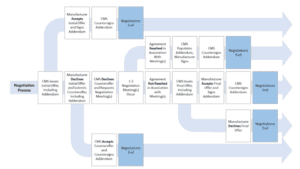The Role of Pet Insurance in Emergency and Critical Care Scenarios

“This post may contain affiliate links, if you click a link we may earn a commission if you purchase from that merchant.”
Pets are an important part of our lives and our families. They bring us joy, companionship, and unconditional love. However, just like humans, pets can also experience medical emergencies and require critical care. In these situations, having pet insurance can make all the difference. Pet insurance provides financial coverage for unexpected veterinary expenses, giving pet owners peace of mind knowing that they can provide the best care for their furry friends without worrying about the cost.
Emergency and critical care scenarios can arise at any time, and they often come with hefty price tags. Whether it’s a sudden illness, an accident, or a chronic condition that requires ongoing treatment, the costs of veterinary care can quickly add up. Without insurance, pet owners may find themselves faced with difficult decisions about their pet’s health due to financial constraints. However, with pet insurance coverage, these decisions become easier as the financial burden is lifted, allowing pet owners to focus on getting their pets the care they need.
Key Takeaways
Pet insurance can help cover the rising costs of veterinary care.
It’s important to find the right coverage plan for your pet’s needs.
Look for a pet insurance provider with good customer service.
Emergency and critical care coverage varies by plan, so it’s important to understand what is covered and what is not.
When choosing a pet insurance company, consider factors such as deductibles, co-pays, and pre-existing conditions.
The Rising Costs of Veterinary Care: How Pet Insurance Can Help
Over the years, the costs of veterinary care have been steadily increasing. Advances in technology and medical treatments have led to better outcomes for pets but have also come with higher price tags. Routine procedures such as vaccinations and check-ups are now more expensive than ever before, and emergency and critical care treatments can cost thousands of dollars.
Pet insurance can help offset these rising costs by providing coverage for a wide range of veterinary services. Depending on the plan chosen, pet insurance can cover everything from routine preventive care to emergency surgeries and hospitalizations. This means that pet owners don’t have to worry about the financial burden of unexpected medical expenses and can focus on providing the best care for their pets.
Coverage Types: Finding the Right Plan for Your Pet’s Needs
When it comes to pet insurance, there are different types of coverage to choose from. The most common types include accident-only coverage, illness coverage, and comprehensive coverage. Accident-only coverage provides coverage for injuries resulting from accidents, such as broken bones or lacerations. Illness coverage covers the costs of treating illnesses, such as infections or chronic conditions. Comprehensive coverage combines both accident and illness coverage, providing the most extensive coverage for a wide range of veterinary services.
When choosing a pet insurance plan, it’s important to consider your pet’s specific needs. Factors such as age, breed, and pre-existing conditions can affect the type of coverage that is best suited for your pet. For example, older pets may require more comprehensive coverage due to their increased risk of developing age-related illnesses. Additionally, certain breeds may be prone to specific health conditions that should be covered by the insurance plan.
Customer Service: What to Look for in a Pet Insurance Provider
In addition to the type of coverage offered, it’s important to consider the customer service provided by the pet insurance provider. Dealing with a pet’s medical emergency or critical care situation can be stressful enough without having to navigate through complicated insurance claims processes or dealing with unhelpful customer service representatives.
When selecting a pet insurance provider, look for one that has a reputation for excellent customer service. This includes prompt and efficient claims processing, clear communication about policy details and coverage, and knowledgeable and friendly customer service representatives who can answer any questions or concerns you may have.
Emergency and Critical Care Coverage: What is Covered and What is Not
Emergency and critical care coverage is an essential component of any pet insurance plan. This type of coverage typically includes expenses related to emergency surgeries, hospitalizations, diagnostic tests, medications, and follow-up care. It provides financial protection in case your pet requires immediate medical attention due to an accident or sudden illness.
However, it’s important to note that not all emergency and critical care expenses may be covered by pet insurance. Some plans may have limitations or exclusions for certain conditions or treatments. For example, pre-existing conditions, cosmetic procedures, and experimental treatments may not be covered. It’s crucial to carefully review the policy details and ask questions to ensure that you understand what is covered and what is not before purchasing a pet insurance plan.
Senior Pets: Special Considerations for Insurance Coverage

Senior pets have unique healthcare needs that should be taken into consideration when selecting a pet insurance plan. As pets age, they are more prone to developing age-related illnesses such as arthritis, diabetes, and cancer. These conditions often require ongoing treatment and management, which can be costly.
When choosing a pet insurance plan for a senior pet, look for coverage that includes chronic condition management and ongoing treatment. This can help offset the costs of medications, regular check-ups, and specialized care that senior pets may require. Additionally, some pet insurance providers offer senior pet discounts or plans specifically tailored to the needs of older pets.
Pre-Existing Conditions: How They Affect Your Pet’s Insurance Coverage
Pre-existing conditions are health conditions that your pet has been diagnosed with or shown symptoms of before the start of the insurance coverage. These conditions are typically not covered by pet insurance plans. This means that if your pet has a pre-existing condition, any expenses related to that condition will not be reimbursed by the insurance provider.
It’s important to disclose any pre-existing conditions when applying for pet insurance to ensure that you receive accurate quotes and coverage information. Some pet insurance providers may offer coverage for pre-existing conditions after a waiting period or with additional premiums. However, it’s crucial to carefully review the policy details and understand the limitations and exclusions related to pre-existing conditions before purchasing a pet insurance plan.
Deductibles and Co-Pays: Understanding Your Financial Responsibility
Deductibles and co-pays are important factors to consider when selecting a pet insurance plan. A deductible is the amount of money that you are responsible for paying before the insurance coverage kicks in. Co-pays, on the other hand, are a percentage or fixed amount that you are responsible for paying for each veterinary visit or treatment.
When choosing a deductible and co-pay, it’s important to consider your budget and financial situation. A higher deductible and lower co-pay may result in lower monthly premiums but require you to pay more out-of-pocket when your pet requires veterinary care. On the other hand, a lower deductible and higher co-pay may result in higher monthly premiums but reduce your out-of-pocket expenses when your pet needs medical treatment.
Choosing a Provider: Factors to Consider When Selecting a Pet Insurance Company
Choosing the right pet insurance provider is crucial to ensure that you receive the best coverage and customer service for your pet’s needs. When comparing different pet insurance providers, consider factors such as coverage options, pricing, customer reviews and ratings, claims process, and reputation in the industry.
It’s also important to consider the financial stability of the pet insurance company. Look for a provider that has been in business for a significant amount of time and has a strong financial rating. This will give you peace of mind knowing that the company will be able to fulfill its financial obligations in case your pet requires expensive medical treatments.
The Peace of Mind That Comes with Pet Insurance Coverage
In conclusion, having pet insurance coverage is essential in emergency and critical care scenarios. It provides financial protection and peace of mind knowing that you can provide the best care for your pet without worrying about the cost. With rising veterinary care costs, having pet insurance can help offset these expenses and ensure that your pet receives the necessary medical treatments.
When selecting a pet insurance plan, consider factors such as coverage types, customer service, coverage for emergency and critical care, special considerations for senior pets, pre-existing conditions, deductibles and co-pays, and the reputation of the insurance provider. By carefully reviewing your options and choosing the right pet insurance plan, you can protect your pet’s health and well-being while also protecting your finances.
If you’re considering getting pet insurance, you may also want to think about the importance of having other types of insurance coverage. One article that might interest you is “The Basics of Car Insurance: What You Need to Know” which explains the different types of auto insurance coverage and why it’s essential to have proper car insurance. Understanding the basics of car insurance can help you make informed decisions about protecting your vehicle and yourself on the road. Read more
FAQs
What is pet insurance?
Pet insurance is a type of insurance policy that covers the cost of veterinary care for pets in case of illness or injury.
What does pet insurance cover?
Pet insurance policies can vary, but most cover accidents, illnesses, and emergency care. Some policies may also cover routine care, such as vaccinations and check-ups.
How does pet insurance work?
Pet owners pay a monthly or annual premium for their pet insurance policy. When their pet needs veterinary care, they submit a claim to the insurance company for reimbursement of covered expenses.
Why is pet insurance important in emergency and critical care scenarios?
Emergency and critical care scenarios can be expensive, and pet insurance can help pet owners afford the necessary treatment for their pets. Without insurance, some pet owners may be forced to make difficult decisions about their pet’s care based on financial constraints.
What are some common emergency and critical care scenarios for pets?
Common emergency and critical care scenarios for pets include accidents, such as being hit by a car or ingesting a toxic substance, and illnesses such as kidney failure or heart disease.
Are all pets eligible for pet insurance?
Most pets are eligible for pet insurance, but some breeds or pets with pre-existing conditions may not be eligible or may have limited coverage.
How do I choose the right pet insurance policy for my pet?
When choosing a pet insurance policy, consider your pet’s age, breed, and health history, as well as your budget and the coverage options offered by different policies. It’s also important to read the policy carefully and understand what is and isn’t covered.



